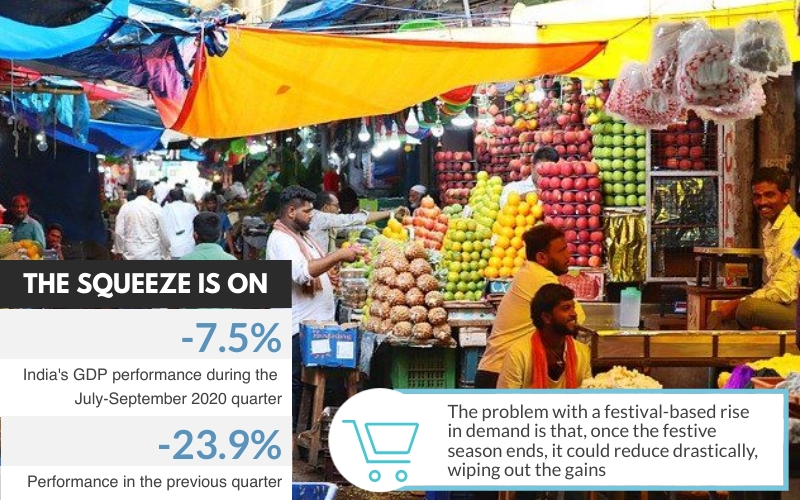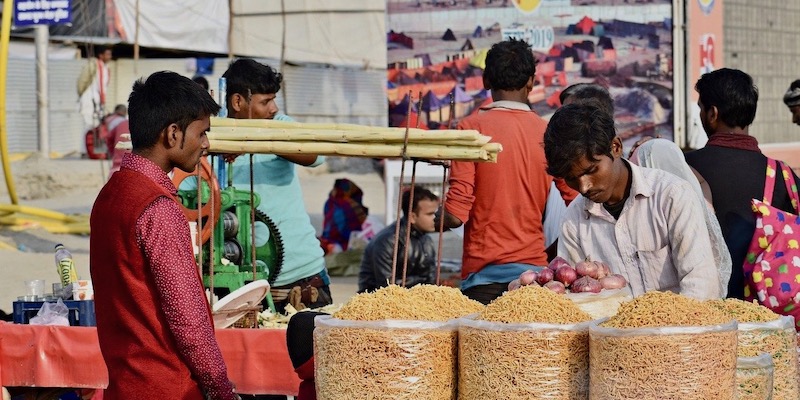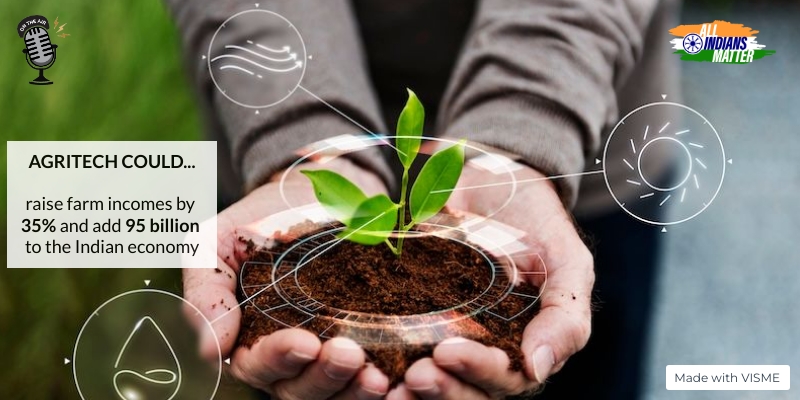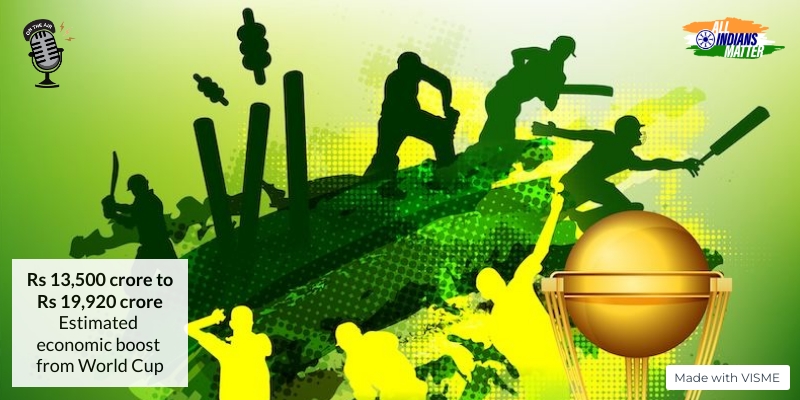
Ashraf Engineer
November 30, 2020
PODCAST TRANSCRIPT
Hello and welcome to All Indians Matter. I am Ashraf Engineer.
India’s economy contracted 7.5% between July and September 2020, coming on the back of a 23.9% contraction in the previous quarter. This is India’s first ever technical recession.
SIGNATURE TUNE
First of all, let’s understand the difference between a slowdown and a recession. India’s economy had been slowing considerably even before the COVID-19 pandemic, but was still growing. While this too has implications on poverty reduction, job creation and the provision of government services, it wasn’t a recession. A recession is when an economy shows two consecutive quarters of contraction, also known as negative growth. This is disastrous for any economy, but especially so for a developing country like India. It means lower consumer and industrial spending, and even more job losses. Don’t forget, India is a young nation and job creation is one of the top national priorities.
After the lockdown devastated the global economy, the growth recorded by major markets such as Japan, Germany and the US during the July-September quarter raised hopes that India would witness a revival too. However, that wasn’t to be.
Among the various sectors that were tracked, consumer businesses grew due to increased spending for the festive season. Agriculture grew 3.4%; electricity, water supply, gas, and other utilities grew 4.4% from -7% in the previous quarter; manufacturing grew 0.6% from -39.9%.
However, expectations of a wider recovery were dashed as the construction and hospitality sectors suffered a major hit. The services sector too suffered a double-digit decline. All of these are major employment generators.
There is virtually no good news on the recovery front. In October, Reserve Bank of India Governor Shaktikanta Das estimated that the economy would shrink 9.5% over the entire year, while the International Monetary Fund predicted a contraction of 10.3%. A report by Oxford Economics said India would be the worst affected economy even after the pandemic eased, and that annual output would be 12% below pre-virus levels till 2025.
While the government has announced stimulus measures, many economists expressed disappointment at them. Kunal Kumar Kundu, India economist at Societe Generale, told CNBC that the “inadequate fiscal response” has resulted in the lockdown failing to flatten the infection curve.
Shilan Shah, senior India economist at Capital Economics, pointed out in the media that government consumption too fell sharply – in part because of an “inadequate fiscal response to the crisis”.
Most economists agree that the GDP numbers looked better because of the festive season spending and pent-up demand. However, this demand could wear off and there is a chance that the third quarter could look worse.
So, what exactly is pent-up demand?
When economies experience sudden shocks, such as the lockdown, consumers defer non-essential purchases to save money. As a result, demand plummets. However, as time goes on, they start spending cautiously again, thus raising demand. This is pent-up demand. In India’s case, this rise was due to the festive season.
Normally, pent-up demand is mainly related to discretionary spending rather than non-discretionary spending. Discretionary spending is based on wants rather than needs – for example, a holiday or a meal at a restaurant. Non-discretionary spending is what you and I spend on essentials, such as vegetables, pulses, rice, milk, baby food – to name just a few.
The problem with a festive-season-based pent-up demand is that it can reduce once the festive season ends.
Now, the performance of the economy will need to be carefully monitored. After an uptick in early November, high-frequency indicators are beginning to show fatigue. High-frequency indicators include steel and cement production, cargo handled at ports, production of commercial vehicles, railway freight traffic, non-oil imports, tourist arrivals, bank credit, insurance premium collections, etc.
Also, the growth in non-food bank credit remained unchanged during the fortnight ended October 23 from the level recorded on September 25. It shows the unevenness in the recovery.
This indicates that the spikes in various sectors are an exaggeration of the true recovery on the ground and they may not sustain after the festive period is over, said ratings agency ICRA in a report.
The GDP data highlights how differently India and China have fared in the wake of the pandemic. China’s recovery actually accelerated in the most recent quarter on the back of a well-managed lockdown and the investment of hundreds of billions of dollars in major infrastructure projects to fuel economic growth. China may be the only major economy to end the year bigger than it started. India, on the other hand, has fared the worst among major economies and the data indicates that it has a tough battle ahead to raise demand and lower unemployment rates.
Thank you all for listening. Please visit www.allindiansmatter.in for more columns and audio podcasts. You can follow me on Twitter at @AshrafEngineer and @AllIndiansCount. Search for the All Indians Matter page on Facebook. On Instagram, the handle is @AllIndiansMatter. Catch you again soon.






